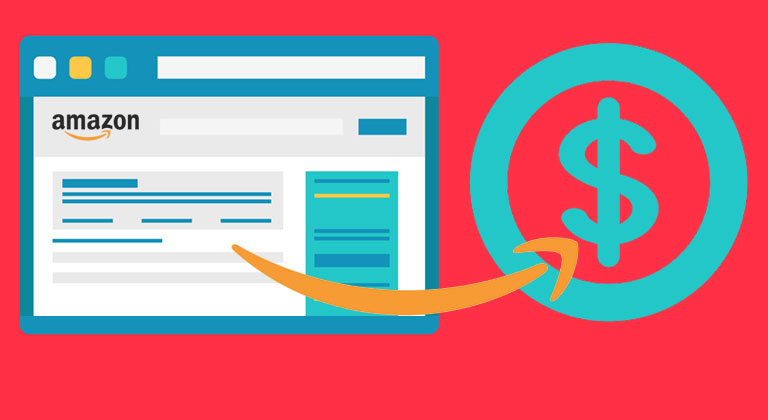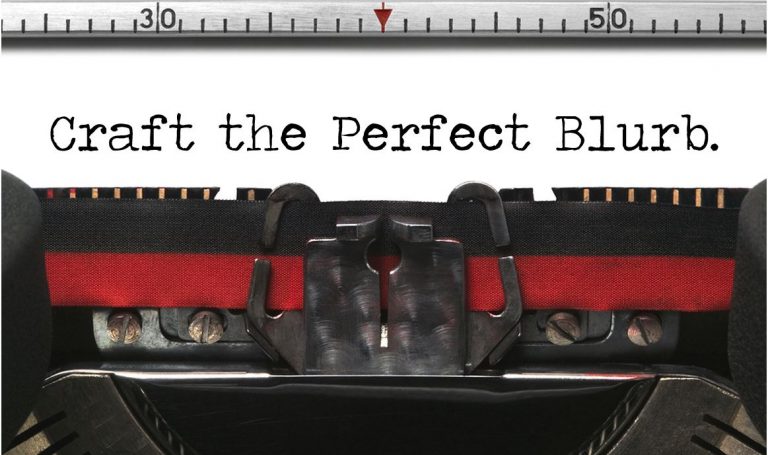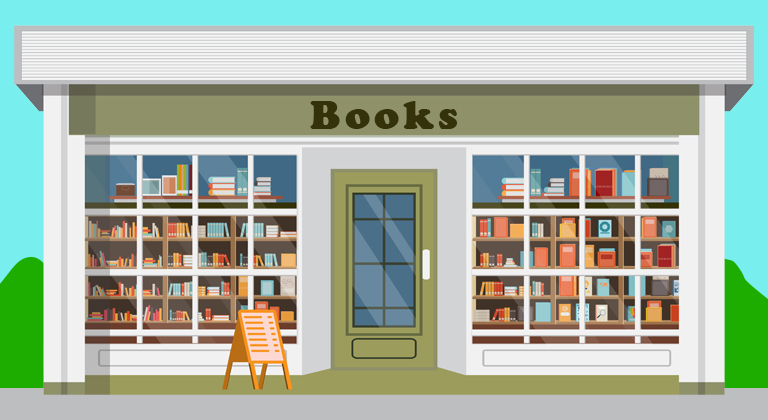Using Amazon Ads to Sell Your Novel
These days, advertising is an integral part of any book launch and not something any self-published author can ignore. We’ve covered the topic of advertising in the past, but one of the things we didn’t go into in details was Amazon’s advertising platform (formerly called AMS). Luckily, Liam Clay recently spent time learning their system and testing it out, and in today’s guest post he shares what he’s learned.
Are you an indie author with a recently completed debut novel? Then chances are good that you either have, or are about to, place your book on Amazon. The question then becomes, what next? Because if you think that strangers are going to start buying your book en masse without any further action from you, I urge you to think again.
I say this because two months ago, I was in exactly the same position. Watching tumbleweeds roll through the ghost town that was my sales dashboard, wondering when people were going to start drilling for my sweet literary oil. But here’s the thing. If they don’t know that oil exists, no one is going to come.
Now for a lot of people, advertising is a dirty word. And for others, it is perceived as being the realm of Nikes, Coca Colas, and no one else. But with Amazon ads, small fish like you and me can reach our specific audience for a manageable price AT THEIR POINT OF PURCHASE. I capitalized the preceding section because it’s so unusual. You see a TV ad and you need to go out into the world to buy that product, or at least jump online to do so. But with Amazon ads, readers can see and buy your book almost instantaneously. That is pretty cool.
But before we deep dive on the platform, there are a few steps you should already have completed by this point.
- If you’ve read even a single article on self-publishing then this will already have been impressed upon you, but don’t even go near Amazon until you have a polished manuscript, a strong cover and a blurb that speaks to readers of your genre. Tips on how to achieve this can be found elsewhere on this site as well as the wider net.
- You should have an author website, and it should include a page where your (as of yet non-existent) fans can sign up to your readers list. There should also be a link to that page at the end of your ebook.
So you’ve ticked all of these boxes, you say? Good work! Now let’s get into the ads.
Setting Up Your Ad
The first step is to set up your ad itself, which includes writing the copy, choosing the type of ad, targeting the ad and even how much you want to spend.
Ad Copy
Up until December 2018, there were two different lengths of ad copy to choose from: a 150-character version and a 50-character one. (Keeping in mind that spaces and punctuation marks count as characters.) But Amazon seems to have done away with the shorter version, so you should focus on the 150. When an ad gets served to a shopper, it is this copy and your book cover that they will see. So both of them need to be perfect. I tweaked my copy for weeks before I found the version with the best click through rates. More on that later.
Ad Campaign Types
Now let’s move on to the different types of ads you have to choose from. This is actually a confusing time to be jumping onto the platform, because Amazon recently made some significant changes to how these work. So here’s a rundown.
Once upon a time, there were product display ads. Basically, you pick a bunch of books similar to yours, and Amazon shows your ad to people who have looked at those books in the past (although not necessarily the recent past).
Then came sponsored product ads. These let you choose up to a 1000 keywords that shoppers might type into Amazon’s search bar when looking for a book to buy. Then, when they do, your ad gets shown to them along with the organic search content.
But as of February 5, 2019, Amazon seemed to phase out product display ads. Except that they hadn’t, really; they just moved them under the umbrella of sponsored product ads. I suspect this is because they are retiring the network that the old product display ads ran on. (read: complicated IT related reasons) And that’s a good thing, because it used to take way longer to get data on the performance of those ads. But I digress.
Under the new system, when you create a sponsored product campaign, you are given three options: keyword ads, product display ads and my personal favorite, category ads. The first two I have already covered. The third option, category ads, lets you show your novel to people looking at books in genre sub-categories of your choosing. They are my favorite for the simplest possible reason: because I sell more books with them.
So that is the new sponsored product ad pantheon in a nutshell. In addition to these campaign types, Amazon has also introduced what they are calling lockscreen ads. Creating this type of campaign will get your ads directly onto people’s Kindles, both on the titular lockscreen and at the bottom of active screens as well.
Bidding
Once you’ve chosen an ad type and started to create your campaign, you will encounter the bidding aspect of the platform. How you bid varies depending on ad type, but here is an example. Say you have identified a keyword that you think potential buyers of your book will type into Amazon. You would then create a keyword campaign and add that word, at which point you would be asked to bid on it.
For example, let’s say that you bid $1.00 on your keyword. From that point on, every time a shopper types your keyword into Amazon, you will be competing with other advertisers for access to their eyeballs. If your bid is higher, you win and your ad gets served. It’s actually way more complicated than that, and the process can be frustratingly opaque at times, but those are the basics.
Amazon will give you a suggested bid and a bid range for your particular keyword, but take these suggestions with a grain of salt. Amazon would obviously prefer you to bid high, and they aren’t shy about telling you to do so.
So, while you can use those suggestions as general guidelines, what you bid should ultimately be determined by carefully testing and measuring different scenarios to find what works best for you.
Analytics
Now let’s assume that you have set up and launched an ad. For the first time, possibly ever, people are seeing your book and reading your copy. Hallelujah. Now it’s time to start digging into the data you get back.
There are two main dashboards that you will want to keep open as tabs at all times. The first is your Kindle Direct Publishing (KDP) sales dashboard. This tells you how many sales you make each day, as well as the number of page reads you receive through Kindle Unlimited (if you have signed up for that service).
The second is your Amazon Advertising dashboard. This gives you all sorts of juicy details about how your ad is performing. There are a boatload of stats you can choose to look at, but I recommend starting with the basics.
Impressions
Every time one of your bids wins, a shopper is served your ad. How that ad is presented can vary, and it’s out of your control anyway, but you can still use impressions to see whether your bids are set high enough, etc.
Clicks
Of all the impressions your ad receives, this is the number of people who were interested enough to click on it. You are charged per click, and how much you pay depends on what you bid for the impression that led to that click. Keep in mind that you may be charged less, but not more, than what you bid.
Yes, it can seem confusing.
Sales
Out of all the clicks your ad receives, the sales stat tells you how many converted into buyers. Not much more to explain here.
ACOS
ACOS stands for Average Cost Of Sale. This measures the ratio between your clicks and your sales. It’s really important, because if lots of people are clicking your ad but nobody is buying the book, you are losing money. If this is the case, you might want to consider revisiting your book blurb or ad copy. There may be a disconnect between the customers your ad copy is attracting and those that would be swayed by your blurb to actually buy the book.
Real World Examples
Now I’m going to take you through my experience setting up ads for my novel, Live Soldier.
When I first started to use the platform, I was only interested in getting data; any sales I made were just a side effect. I recommend that you approach things the same way. To do this, I created one ad of each type and let them run, just to see how they would perform.
Here’s a synopsis of how that went, broken down by ad type.
Category Ads
I write science fiction, which is an established genre with a number of Amazon sub-categories. Now, Amazon sub-categories and their associated best seller lists are a post all to themselves, but suffice to say that you want on those lists. Bad. And if you have already identified which sub-categories you want to target (and you should absolutely have done this) then setting up category ads will be relatively easy for you.
With keyword and product display campaigns, you need to build out extensive lists of keywords and similar titles that your potential readers will be looking for. But with category ads, you just need to know what sub-categories those same readers will be browsing for books in. This way, the platform will do a lot of the heavy lifting for you. (Amazon may not always serve your ad to the most relevant shoppers, but since you aren’t paying for impressions this is not a huge issue.) I created a campaign targeting the following seven sub-categories:
- Sci fi adventure
- Sci fi dystopian
- Sci fi post-apocalyptic
- Sci fi cyberpunk
- Sci fi genetic engineering
- Sci fi humorous
- Sci fi military
Then I sat back and let the ads run. After a day or two, Amazon started to return stats on impressions, clicks, sales etc. for each sub-category. And the results were really interesting.
discovered that although I was getting the most impressions from the military, adventure and dystopian categories (probably because they get the most traffic) my ads shown to readers browsing those categories were only generating a moderate number of clicks, and hardly any sales. Meanwhile, post-apocalyptic was getting almost as many impressions, more clicks, and a few sales. A better result.
Sci fi humor is not a highly browsed category, and was not generating enough impressions to be useful.
The remaining two sub-categories, cyberpunk and genetic engineering, were both generating substantially fewer impressions than the others (excluding humorous) but click through rates were far higher. And crucially, so were sales.
This data was invaluable, because by adjusting my bids, I was able to maximize my novel’s exposure to the readers most likely to buy it, and minimize its exposure (and associated bid cost) to those more likely to click but not buy. It also told me, once and for all, how to describe my book from a sub-genre perspective.
Keyword Ads
For this campaign, I started off with about 100 keywords that I thought were relevant to my book. These keywords fell into the following three categories:
- Novel descriptions, like Military sci fi, Cyberpunk book, etc.
- Similar author names, like Neal Stephenson, Martha Wells, etc.
- Similar novel titles, like Snow Crash, Ready Player One, etc.
Naively, I thought that a hundred keywords would be plenty but I quickly learned why Amazon gives you a 1000.
Most of the keywords I wanted had very high suggested bids, (some as much as $3.50 for a single click) indicating that competition among advertisers was fierce for them. Given that I am selling my book relatively cheaply, I couldn’t condone spending that type of money, so I lowballed. And unsurprisingly, I didn’t get many impressions. And low impressions equals low clicks, and low clicks equals… you get the picture. To compare, I have been able to keep my category ad bids relatively low and still get impressions. This will vary for different people depending on what keywords/sub-categories they are targeting; I am just relating my experience.
As a closing thought on keyword ads, I suspect that they are more useful to non-fiction writers. I wouldn’t look for a novel to read by typing in a search term, and although I’m sure there are people who do, I simply don’t have faith in their numbers. Non-fiction readers, on the other hand, are often looking to solve specific problems or get info on certain topics. For instance, if I wanted to get rich quick (which I clearly don’t, or I wouldn’t have gotten into writing) I might search for something like ‘how to make money fast’. So, if you wrote a book on how to do that, you should consider bidding on that keyword (which is known as a longtail keyword, by the way).
Product Display Ads
My campaign targeting novels similar to mine ran into the same issues as my keyword version. Most of the books I wanted to target had high suggested bids, and even when I did bid high, impressions per book remained low. I started with well-known novels from traditionally published authors, and then moved on to other indie sci fi titles. And to my (unpleasant) surprise, I found that the self-published author titles were at least, if not more expensive than trad published titles. I am still running these ads, but at low bid rates which are generating low impressions.
There is one other cool (but time-consuming) thing I’ve been doing with sponsored product ads, and that is to target specific books and series. For example, since I feel that my novel has similarities to the Murderbot novellas by Martha Wells, I created a campaign targeting just the books in that series, with ad copy that specifically references those similarities. So far these have generated very low impressions but high everything else, so if you were to create enough of them, they could become extremely effective. But like I said, very time heavy.
Lockscreen Ads
My lockscreen campaign is also generating low impressions at the bid levels I can condone, with click throughs and purchase ratios in line with my category ads (which have remained very stable over time, making them useful as a benchmark). So although lockscreen ads are undeniably neat, I have yet to see a significant return.
Conclusion
In summary, category ads have worked best for me. And because my impression to click to buy ratios have stayed so steady, I can basically ramp my bids up or down to generate more or less sales as I see fit. But to be clear, all of this is highly volatile, and what is true now may not be true by the time you read this.
For example, category ads are new, and the bid levels required to generate adequate impressions have already risen dramatically since I started using them. There may come a time when they are no longer feasible for my purposes.
And that, in a nutshell, is my experience with Amazon ads.
And how are things going, you ask?
Well, as of writing I’m getting a handful of sales a day, every day, and about 500 page reads through Kindle Unlimited as well. People are actually reading my book, which is kind of a dream come true in itself, isn’t it?
I’m starting to get (positive) reviews, and people are signing up to my email list as well. Hopefully that means that when I release the sequel, they’ll be the first ones to buy it. After all, that’s one way an indie novelist can make real money: by spending the majority of your advertising budget on the first novel in a series, and reaping the rewards as readers buy the (unadvertised) follow ups.
This is the indie Amazon journey, and I should warn you that it’s a long one. If there is a way to get rich quick off this, I obviously haven’t been using the right search terms to find the books that will tell me how. But it’s a solid start, and the whole process has been pretty damn exciting, for me anyway.
Hopefully you will have a similar experience.












I see this article is over a year old. Any updates or new findings? I discovered category ads thanks to this article…. thank you! No idea if it will work for me, but your logic that key words might work better for nonfiction authors is sound. I find so often marketing advice for nonfiction doesn’t carry over for fiction, and that’s probably a vice versa situation.